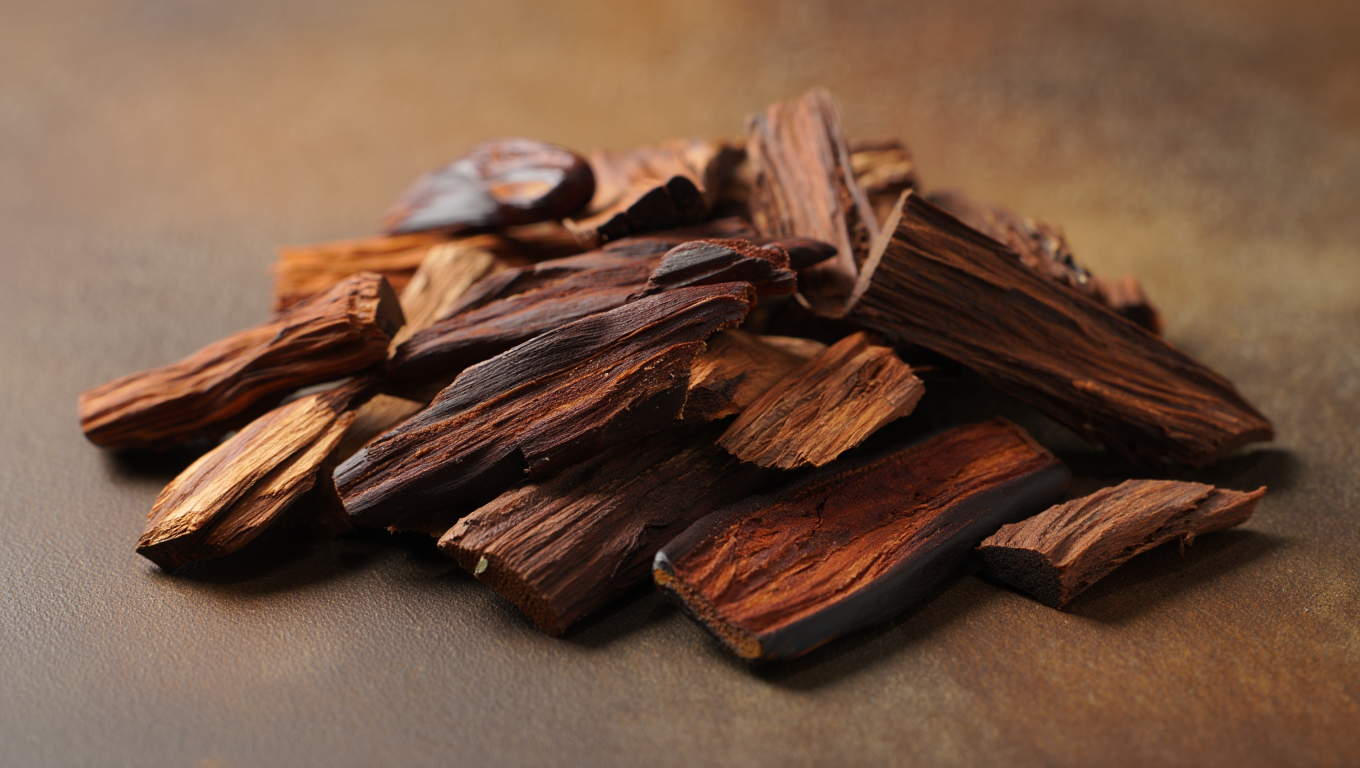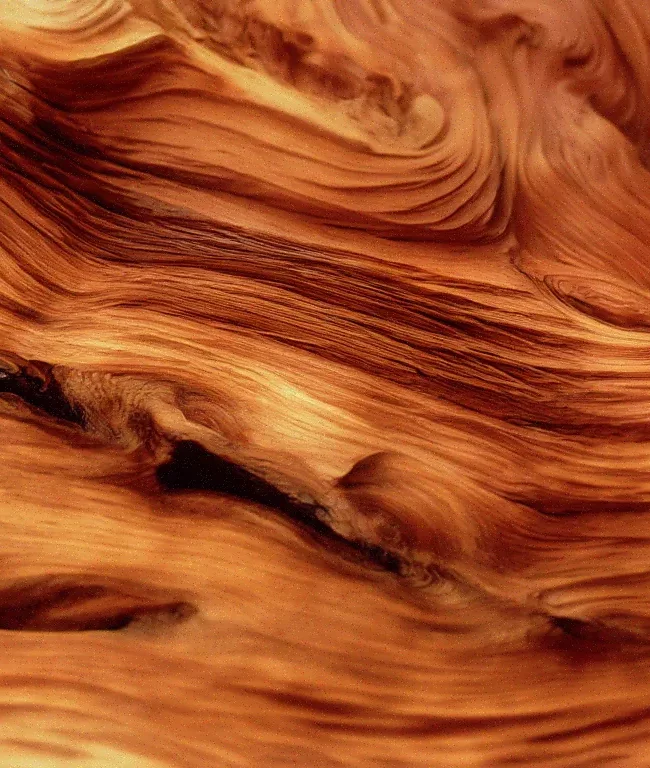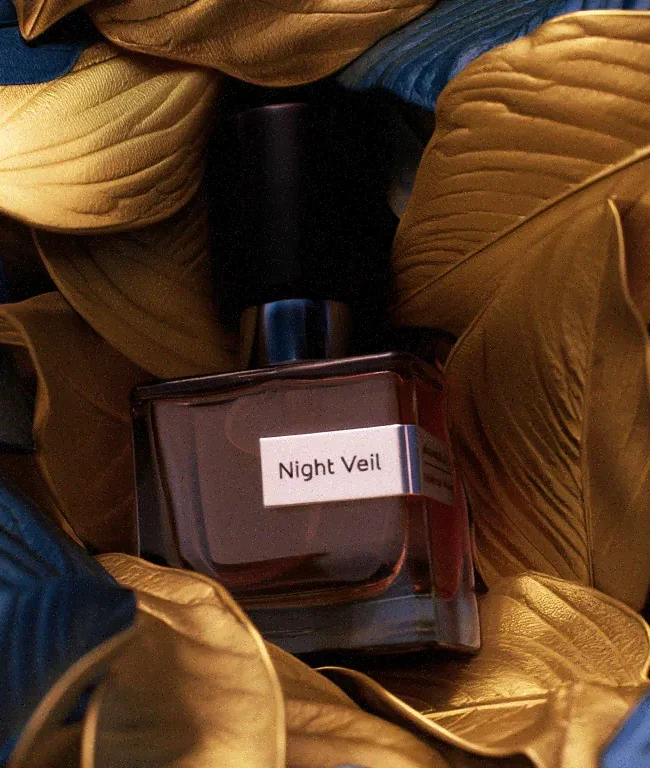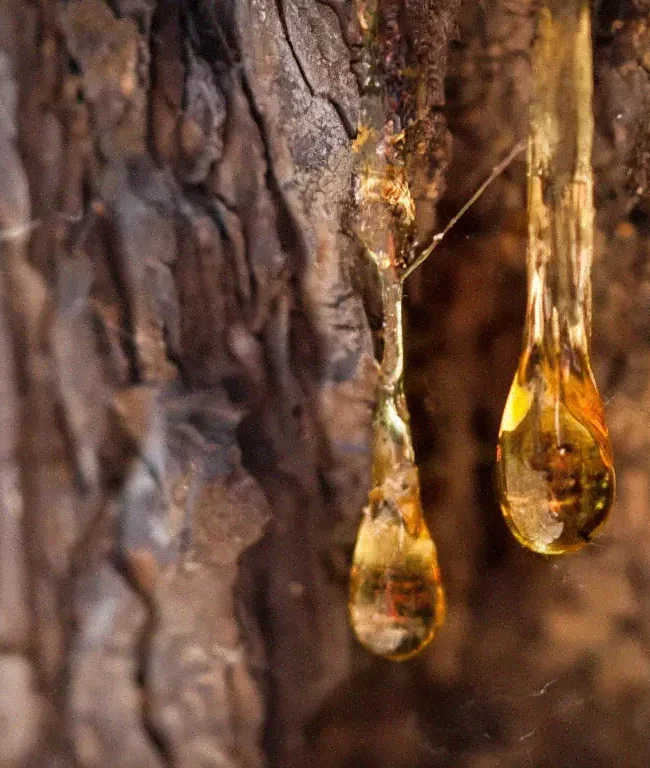
The Multilayered World of Oud: Animalic Nuances and Resinous Depth
Oud’s reputation reaches far beyond its price tag. This singular oleoresin—formed only when Aquilaria or Gyrinops trees meet the right fungal partner—offers a fragrance experience that feels alive, shifting with temperature, skin chemistry, and even mood. To understand why perfumers call oud a “complete perfume” we’ll journey from its molecular labyrinth through its regional dialects, distillation secrets, ethical debates, and finally its role as a fixative and modulator.
What Makes Oud Oil Special?
Oud—also called agarwood, gaharu, jinko, or aloeswood—forms only after certain Aquilaria or Gyrinops trees become infected by a specific mold (Phialophora parasitica). The tree responds by exuding a dark, highly aromatic oleoresin that slowly saturates the heartwood. Because only a tiny fraction of trees ever develop this resin naturally (and it takes decades to reach full maturity), oud has been treasured for millennia in Arab, South-Asian, and East-Asian rituals.
Chemically, a single oud oil can contain 350 + discernible molecules, ranging from highly volatile monoterpenes (providing sparkling top notes) to hefty sesquiterpenes and chromones that anchor the dry-down. This sprawling molecular stack is why quality oud smells like a complete perfume out of the bottle: airy citrusy wisps up top, a bloom of florals and spices in the heart, and an inexhaustible base of woods, balsams, and animalic musks.
Modern gas-chromatography can identify some of these components (e.g., agarospirol, jinko-lactone, iso-humulene), yet perfumers still struggle to isolate the “magic” that ties them together. Even where synthetic analogs exist—Ethyl ambrinol for ambergris, civettone for civet, γ-nonalactone for coconut-like facets—they rarely reproduce the interconnected harmony that natural oud exhibits.
Woody and Animalic Dimensions
Before diving into geography, it helps to map the twin axes that make oud so captivating.
Woody Facets
- Resinous incense: fresh frankincense sparkle or the darker, dusty glow of aged Hojari;
- Sandalwood creaminess: especially in older Thai and Malaysian distillations;
- Labdanum & benzoin balsamic swirls: suggesting leathery warmth;
- Singed vetiver roots & amyris smoke: hinting at damp forest fires and temple burners.
Animalic Facets
- Ambergris whispers: salty-marine suede, sometimes a gentle grey-musk fuzz;
- Castoreum & hyraceum: leathery barn plumes, damp stables, dried dung that paradoxically smells plush;
- Civet flashes: a warm “human skin” radiance that gives diffusion;
- Sheep or wool musk tones: lanolin-soft, hay-like nuances often perceived in vintage Hindi ouds.
The push-and-pull between these facets is why a single drop on skin can unfurl for half a day, adapting to temperature, humidity, and even the wearer’s diet. Few raw materials perform this olfactory calligraphy.
Regional Variations in Oud – A Deeper Dive
Just as wine reflects its terroir, oud mirrors soil, climate, fungal lineage, and distiller’s hand.
| Region | Hallmark Aromatics | Typical Distillation Vessels | Aging Habit | Signature “Mood” |
|---|---|---|---|---|
| Assam / Hindi (India) | Barnyard leather, dried hay, dark tobacco, musk-laden hyraceum | Steel or copper; often long pre-soaks | 3–7 yrs common | Primal, vigorous, projection-heavy |
| Meghalaya / Nagaland (India) | Softer leather, earthy nagarmotha root, licorice, tamarind | Hybrid pots; medium soaks | 1–4 yrs | Velvety, comforting animalic |
| Thailand (Trat, Prachin, Khao Yai) | Chili heat, green peppercorn, sticky tropical fruits (mango, jackfruit), frankincense twang | Mainly stainless-steel; hydro or steam | 2–10 yrs | Sparkling, spicy-sweet, gourmand-friendly |
| Cambodia | Molten syrupy fruits, cola-like balsam, sweet smoke, gentle barn | Copper & hybrid; short soaks | 4–8 yrs | Playful, boozy, extremely layered |
| Myanmar (Burma) | Mulled-wine spice, papaya nectar, warm cedar, soft suede | Steel; hydro-distilled wild harvests | 1–5 yrs | Inviting, cherry-wood warmth |
| Laos | Antique library woods, petrichor moss, mild tobacco-hay | Wood-fired traditional stills | 2–6 yrs | Dry, meditative, temple-like |
| Malaysia / Borneo | Polished ebony, cool incense, eucalyptus-mint lift, Sarawak pepper | Copper; often micro-distillations | 5–12 yrs | Smooth, airy-resinous, zen-clean |
(Table deliberately simplified; micro-terroir and batch practices can blur lines.)
Beyond Geography: How Technique Shapes Scent
- Soak Time & Medium
Longer water soaks coax out deeper animalic notes; shorter “quick-fire” soaks preserve brighter fruity accents. Saltwater or rice-wash soaks add faint mineral or fermented nuances. - Distillation Heat Source
- Copper pots confer a subtle metallic sweetness and can tame barn facets.
- Stainless steel yields a “cleaner,” sometimes sharper profile.
- Hydro-distillation (wood floating in boiling water) tends to create juicier, fruitier ouds; steam or super-critical CO₂ can isolate fresher top notes but risk losing soul-depth.
- Aging Environment
Oud thickens and polymerizes over years, mellowing harsh acids and fusing terpenes. Dark-cool storage preserves volatile florals; open-air “breathing” barrels encourage resinous density. Collectors often decant yearly to oxygenate the oil gently, preventing off-odors.
New Frontiers: Wild vs. Plantation vs. “Jungle-Managed”
- Wild (no human inoculation): prized for unpredictability and rich micro-flora; supplies are vanishingly small.
- Plantation (artificially inoculated trees): scalable and increasingly ethical, yet sometimes criticized for cleaner, less nuanced output—though long aging can rival wild oil complexity.
- Jungle-Managed hybrids (e.g., Meghalayan examples): saplings planted and partly wounded, then left to fend for decades until harvest. These bridge sustainability and wild terroir personality.
The Challenge of Imitating Oud
To mimic Thai Trat fruitiness you might combine black pepper, chili CO₂, pineapple lactone, γ-undecalactone (peach) and frankincense serrata with a trace of civettone. Yet after two hours the façade collapses; the synthetic figure lacks oud’s bass-note gravity. Likewise, a Hindi barn accord of castoreum tincture, indole, costus oil, and Skatole can hint at the stable—but without oud’s resinous “varnish” it turns fetid or flat.
Niche brands sometimes release oud “soliflores” built on 25–40 ingredients: synthetic ambergris, styrax, birch tar, methyl ouds, ethyl vanillin for syrup, and captive molecules like Firmenich’s Orcanox™. Such perfumes can be gripping, but seasoned noses still sense a hollow echo where real oud’s chromone backbone should reside.
Oud as a Fixative & Modulator in Blends
- Floral Lift: a mere 0.2 % of Prachinburi oud can magnify jasmine sambac by reinforcing indolic facets while giving the bouquet a teak-wood pedestal.
- Smoothing Sharp Woods: Pairing 1 % aged Hindi with rough Australian sandalwood spicatum rounds out the top-free harshness, delivering a creamy vintage sandal memory.
- Gourmand Depth: Cambodian syrup notes synergise with tolu balsam and cocoa absolutes, producing a “cola-truffle” accord that stays edible yet sophisticated.
Perfumers often describe oud as a “gravity well”—whatever materials orbit it become deeper, darker, and longer-lived.
Sustainability & Ethics: The Elephant (or Agar Tree) in the Room
Rampant felling of wild Aquilaria in the 20th century propelled several species onto CITES Appendix II. Responsible sourcing now means:
- investing in verified plantations with traceable GPS lots,
- supporting community cooperatives that plant 5–10 seedlings for every harvested tree,
- choosing hydro-distillation powered by biomass instead of diesel,
- demanding batch GC–MS data to spot adulteration with synthetic “white oud” isolates.
Consumers can also look for certification schemes (FairWild, PEFC) or buy from artisans transparent about permits and quotas.
Practical Tips for Collectors & Perfumers
- First Sniff: Always evaluate from a closed vial first; immediate skin application of a barn-heavy Hindi can overwhelm newcomers and skew perception.
- Dilution Matters: Oud often blossoms at 5–10 % in ethanol, revealing floral whispers masked in neat form.
- Layering Order: When blending, add oud last and age the composition a week; its tenacious molecules can smother lighter notes if built on top.
- Storage: Keep away from heat and light. Aging in inert glass is fine, but rotate droppers yearly to avoid polymerized “plugs.”
- Economy: Plantation Lao or Thai “workhorse” oils excel in bases where barn heft isn’t required, saving prized wild Borneo or Khao Yai drops for the heart or top accent.
Final Thoughts: Why Oud Refuses to Be Replaced
From the incense clouds of Japanese Kōdō ceremonies to the scented sleeves of Mughal emperors, oud has been the benchmark of olfactory luxury. Its unrepeatable chemistry, shaped by terroir, time, fungus, and human craft, makes each batch a fingerprint of nature’s alchemy.
While advances in biotechnology may soon yield lab-grown agarwood cells or enzymatically produced chromones, the synergistic orchestra that occurs inside a living tree—year after year—remains unmatched. For perfumers seeking profundity, and for wearers craving a scent that feels almost alive, authentic oud oil is less an ingredient than a portal: a journey from spicy jungle twilight, through ancient temple smoke, into the quiet, animal warmth of human skin. And that journey, layered and luminous, continues to captivate noses and hearts alike.





Pingback: Perfumery as a Way of Storytelling: How Scents Evoke Associations - olfactive aesthetics author's niche perfumery
February 10, 2025
Pingback: Sourcing Rare Naturals for a Unique Niche: Personal Tales of Exclusive Perfume Materials - olfactive aesthetics author's niche perfumery
March 25, 2025